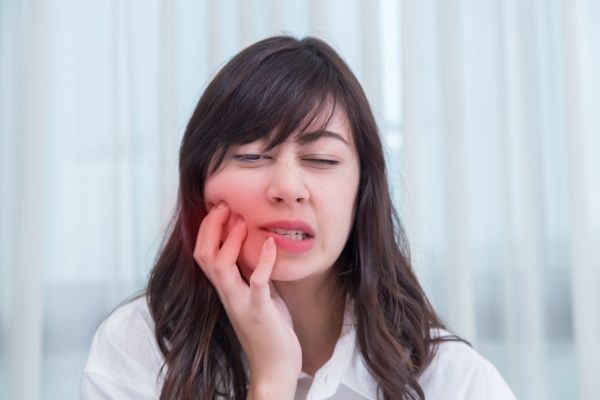 The temporomandibular joints, also commonly referred to as TMJ, are the joints as well as jaw muscles that allow you to open and close your mouth. You have one joint on each side of your head. Your TMJ work together when you speak, chew or swallow and include ligaments, muscles and the jawbone. They also control your lower jaw or mandible as it moves from side to side, backward and forward.
The temporomandibular joints, also commonly referred to as TMJ, are the joints as well as jaw muscles that allow you to open and close your mouth. You have one joint on each side of your head. Your TMJ work together when you speak, chew or swallow and include ligaments, muscles and the jawbone. They also control your lower jaw or mandible as it moves from side to side, backward and forward.
TMJ Symptoms Relief
TMJ is linked to a variety of symptoms including pain in the jaw joint and chewing muscles, jaw muscle stiffness and limited movement. Many times, jaw joint and muscle problems are temporary and rarely get worse. This is why, in some cases, simple treatment may be all that is required to relieve discomfort. Here are some steps a person can take that may help in easing symptoms of TMJ disorders.
Avoiding Overuse of Jaw Muscles
People can benefit from eating only soft foods. Food should be cut into small pieces. People should steer clear of chewy or sticky food. Chewing gum should also be avoided.
Relaxation Techniques
A person should learn techniques for reducing stress and relaxing. Techniques such as meditation or biofeedback can help control jaw tension. Purposefully slowing breathing and taking regular deep breaths can help to relax tense muscles. This, in turn, can help reduce pain.
Stretching and massage
Practicing gentle jaw stretching and relaxation exercises that can help increase jaw movement is important. A dentist, doctor or physical therapist can show a patient how to do certain exercises that strengthen and stretch jaw muscles. Patients may also be shown how to massage the muscles themselves. Exercises will only be recommended if they are appropriate for a patient’s condition.
Heat or Cold and Stabilization Splints
A person should apply moist, warm heat or ice to the side of the face. This is ideal for alleviating pain. In many cases, people with jaw pain can also benefit from wearing a firm or soft device inserted over the teeth. However, the reasons why these devices are helpful are not well-understood.
A dentist or physician may recommend an oral appliance, also referred to as a bite guard or stabilization splint, which is a plastic guard that is designed to fit over the lower and upper teeth. Stabilization splints are some of the most commonly used treatments for TMJ disorders. If a health care practitioner recommends a stabilization splint, a patient should use it only for a short time. It should not cause or lead to permanent changes in the bite. If a splint ends up causing or increasing pain or affecting the bite, a person should stop using it and see a health care practitioner.
When You Should See Your Dentist
TMJ disorders affect millions of people. However, even though the disorders have become persistent, a majority of patients do not need aggressive types of treatment. The treatments described above are useful for temporary relief of pain. But they are not cures for the disorders. If symptoms continue over time, worsen or come back regularly, you should tell your dentist. Your dentist will help you determine the ideal way to ease your symptoms.
Request an appointment or call Integrated Dental Care at (610) 600-9745 for an appointment in our Exton office.

